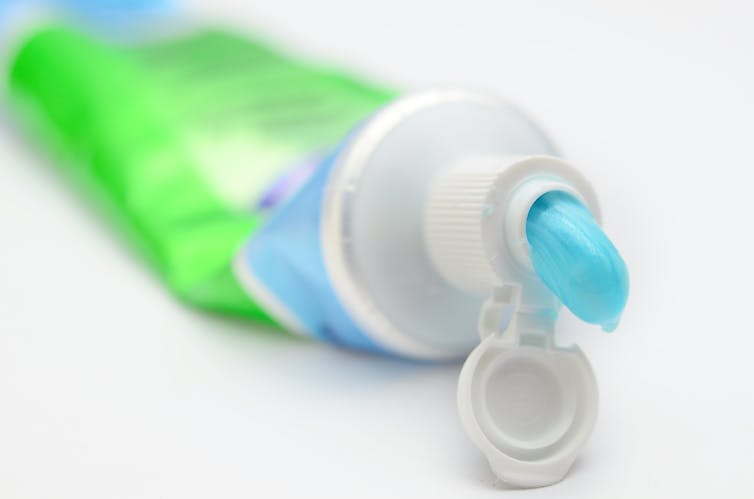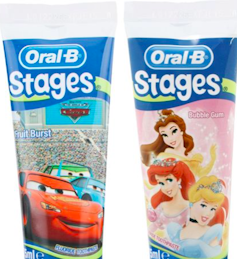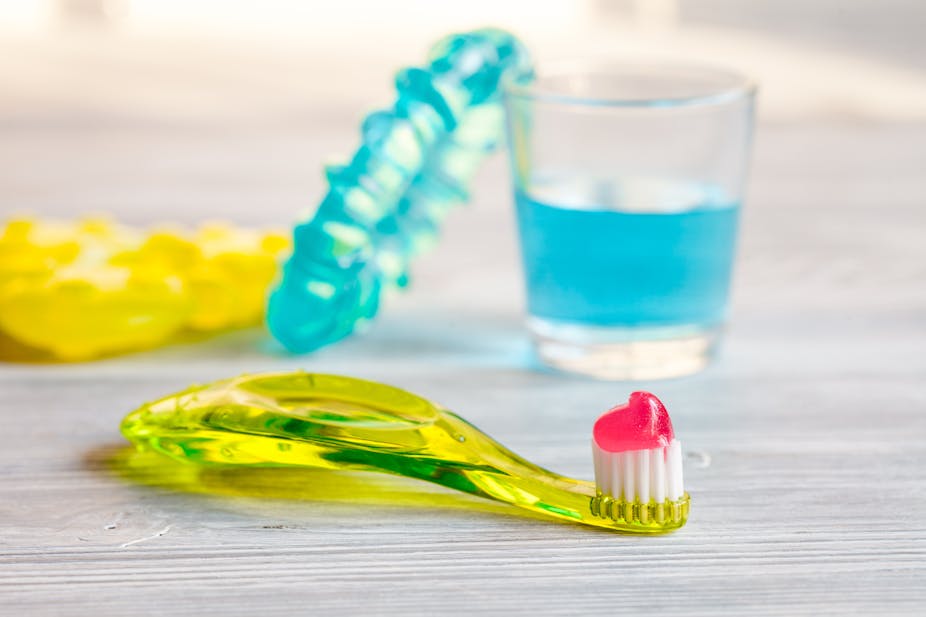Untreated tooth decay in children is the most prevalent condition in the world. It causes pain, infection, sleep loss, problems with eating and speaking, and time off school. It is not a fair disease, affecting the most deprived in society more than anyone else. A quarter of five-year-olds in England have tooth decay, averaging three or four decayed teeth each.
To help tackle this problem, toothpaste manufacturers have long marketed brands of toothpaste aimed at children. They cover them in well-known cartoon characters such as the Disney princesses or Hello Kitty and offer offbeat flavours including strawberry ice cream, bubble gum and fruit burst. They are often more expensive than the standard adult brands – but many parents are enticed to buy them to do the best for their children’s teeth.
As a paediatric dentist, I was recently asked by Channel 4’s Supershoppers to discuss whether these brands are worth the money. It’s certainly a good question – look beyond the colourful packaging and they’re selling little of extra value.

Dos and don'ts
Preventing children’s tooth decay is simple enough in principle: if we reduced all children’s sugar intake and they all used fluoride toothpaste, we would eradicate more than a quarter of the problem.
A smear of toothpaste is enough for kids under three; a pea-sized amount is right for three to seven-year-olds, while anyone older should just use a ribbon of paste along the brush. You should brush a child’s teeth for two minutes twice a day and get them to spit but not rinse. At night time, don’t let them eat or drink after brushing. This allows the fluoride to strengthen the teeth overnight.
But ask which toothpaste to use and it gets more complicated. It’s important for parents to buy a brand that has the right amount of fluoride for their child (expressed as parts per million of fluoride (ppmF)). Read the ingredients on the back of toothpaste tubes and you realise there is a big difference in the amount of fluoride in different brands. Children’s brands vary from 500ppmF to 1,450ppmF while adult brands vary from 1,000ppmF to 1,450ppmF.

Based on strong evidence, the UK Department of Health and the Scottish Intercollegiate Guidelines Network both state that to get the optimal benefit, children under three years of age should use a toothpaste with 1,000ppmF while everyone else needs 1,450ppmF.
The reason why infants need less fluoride content is because there is a theoretical risk the toothpaste could cause white marks on developing teeth. Beyond that, there is no reason in dental terms for any children to have their own toothpaste. This doesn’t stop some manufacturers marketing, say, toothpaste for five to seven-year-olds that contains 1,100ppmF. The reality is that the guidance on toothpaste tubes can be misleading.
Children’s toothpaste brands

Adults’ toothpaste brands

The big squeeze
So why buy children’s brands? As you can see from the tables above, some of them do meet the guidelines on fluoride content. All the same, almost every brand is more expensive per 100ml than a basic tube of, for example, Aquafresh with 1,450ppmF.
One justification is that children sometimes find the taste of mint toothpaste too strong and prefer other flavours. Yet it is still possible to buy non-flavoured toothpastes that contain the right amounts of fluoride. If you can’t find them in your local shops, you can source them online.

Sometimes children can be resistant to having their teeth brushed. If they love a cartoon character featured on the packaging or advertising, this can help to get over this hurdle. You might argue that such brands make toothbrushing fun and make children more willing to take part.
The downside is you are in danger of paying a premium for the marketing. There is nothing in children’s toothpaste for child dental health that isn’t contained in adult tubes. At the end of the day, the only issue parents really have to concern themselves with is the level of fluoride. For super-keen parents, recent research points to some extra benefits from an antibacterial agent called triclosan polymer, but I don’t want to over-complicate things.
In my household, where no one is under the age of three anymore, we all use adult toothpaste. We have no brand loyalty, buying whichever toothpaste offers the best value for money. So long as you follow the fluoride content, you won’t go far wrong. Don’t let flashy pictures of expensive brands for little ones persuade you any differently.

